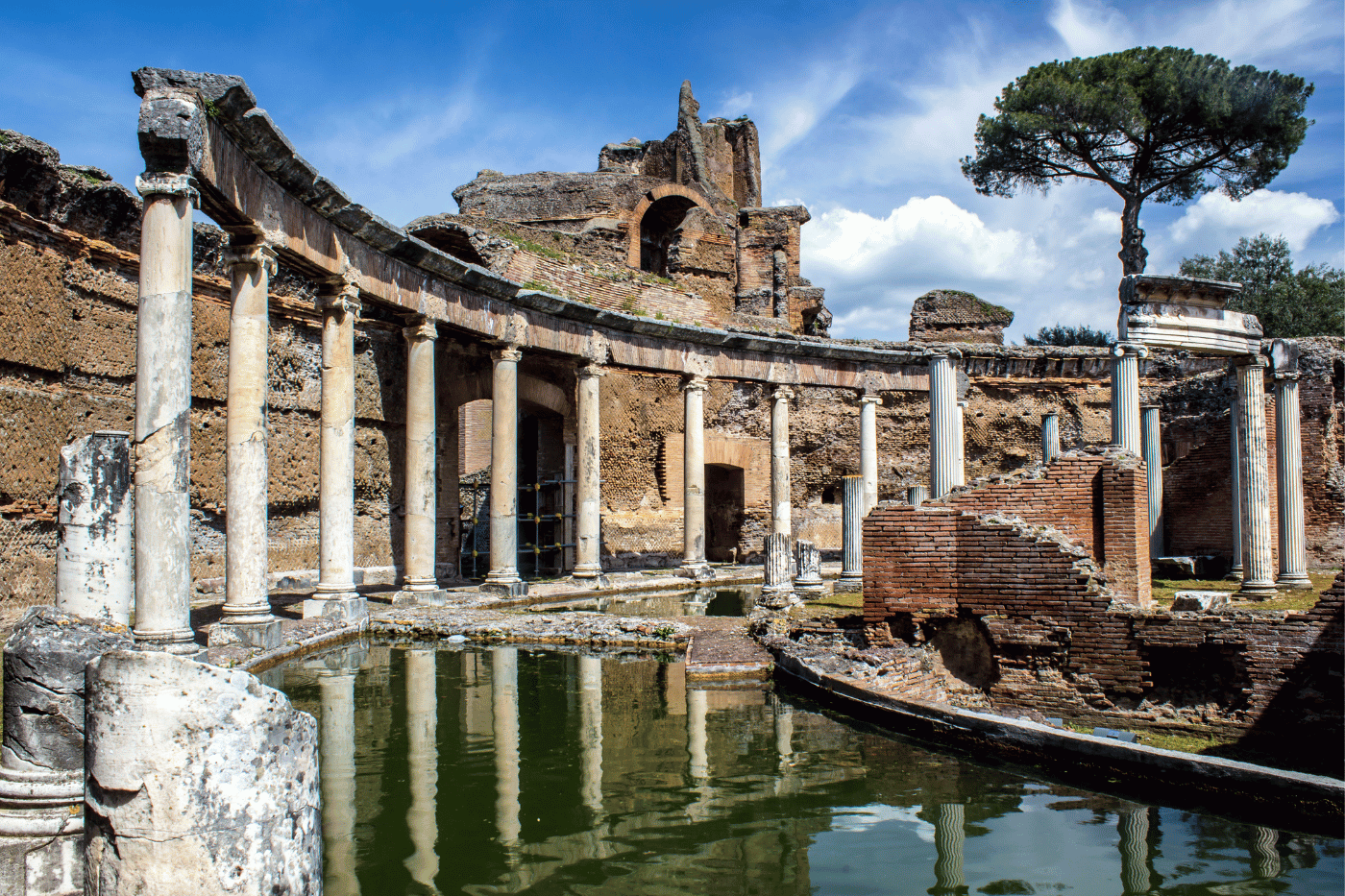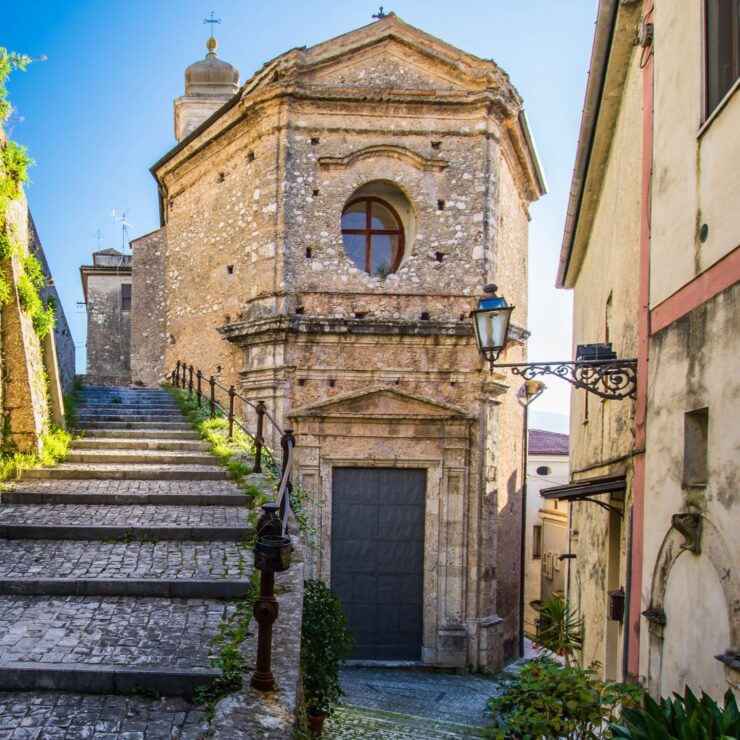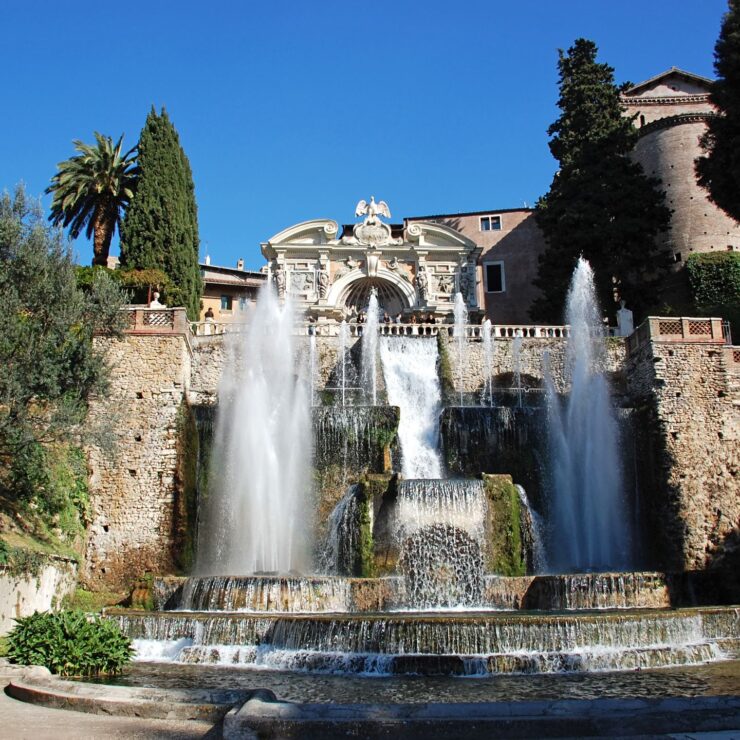In the picturesque town of Tivoli, just a few kilometers from Rome, lies one of Italy’s most fascinating archaeological wonders: Hadrian’s Villa. This lavish imperial residence, built by the Roman emperor Hadrian in the second century AD, is a place that enchants visitors with its grandeur, architectural splendor, and historical importance. Accompany us on a journey through the centuries as we explore the beauty and magnificence of Hadrian’s Villa.
An imperial imprint: Hadrian’s Villa was created by Emperor Hadrian as his personal residence away from the hustle and bustle of Rome. It was conceived as a residential complex of extraordinary size, combining architectural and decorative elements from different cultures and influences. The mansion covered an area of more than 120 hectares and included baths, theaters, libraries, gardens and a wide variety of residential and administrative buildings.
Gardens: The gardens of Hadrian’s Villa were one of its most spectacular features. Inspired by the gardens of ancient Greece and Egypt, they were decorated with fountains, statues, pavilions and arcades, creating an oasis of beauty and serenity. Visitors can stroll through tree-lined pathways, admiring the ruins and imagining what life was like in ancient Rome.
The pavilions and temples: Inside Hadrian’s Villa, one can discover a myriad of richly decorated pavilions, temples, and rooms. The Maritime Theater, for example, was a rotunda with a canal in the middle, where Hadrian liked to retreat to reflect and relax. The Temple of Apollo was one of the main religious structures in the villa, while the Hall of the Philosophers housed statues of famous thinkers of the time. These buildings offer a fascinating glimpse into the life of Emperor Hadrian and his passion for art and culture.
The Canopus: One of the highlights of Hadrian’s Villa is the Canopus, a rectangular pool that recreated the atmosphere of a Nile canal. The Canopus was surrounded by columns, statues and a portico, creating a charming and fascinating atmosphere. It was a place of leisure and relaxation for the inhabitants of Villa Adriana, who could enjoy moments of tranquility and beauty.
A UNESCO World Heritage Site: Hadrian’s Villa was recognized as a UNESCO World Heritage Site in 1999, and with good reason. This extraordinary archaeological site represents an important testimony to the art and architecture of ancient Rome, and offers a valuable window into imperial life.
A visit to Hadrian’s Villa is an unforgettable experience for lovers of history and art. This imperial mansion, with its enchanting gardens, majestic temples and fascinating structures, offers a fascinating journey into the past. If you have the opportunity to visit the Tivoli region, be sure to explore the magnificence of Hadrian’s Villa and immerse yourself in the era of ancient Rome.




